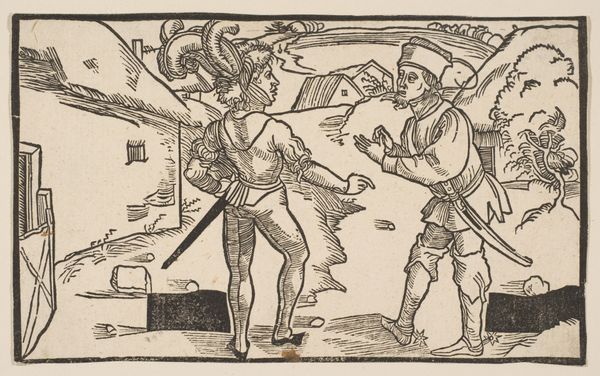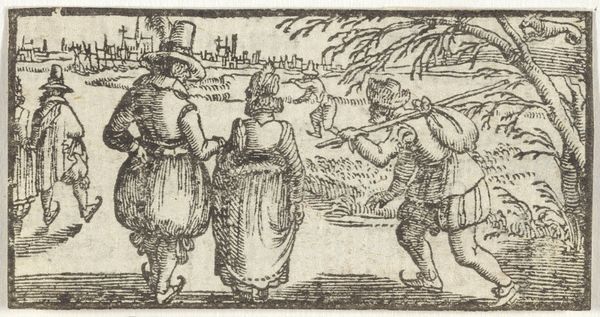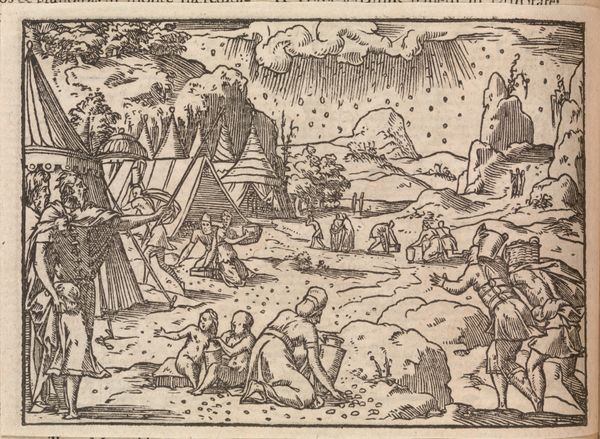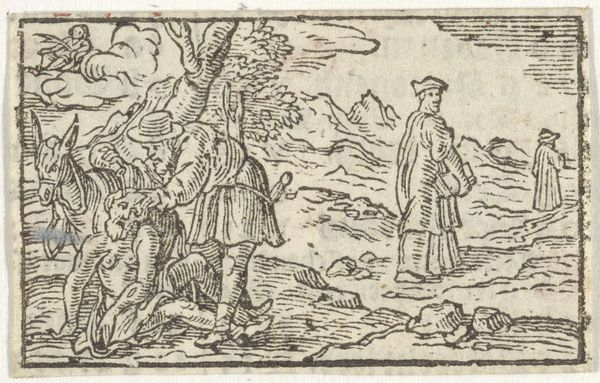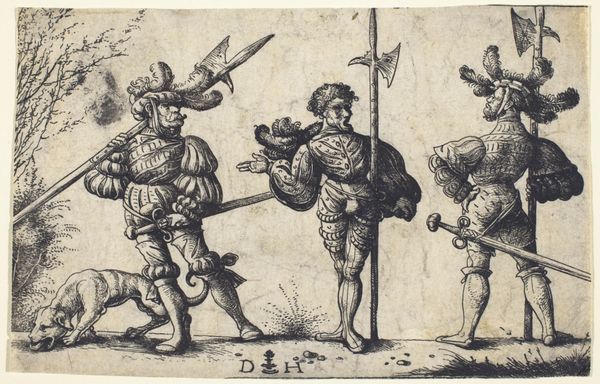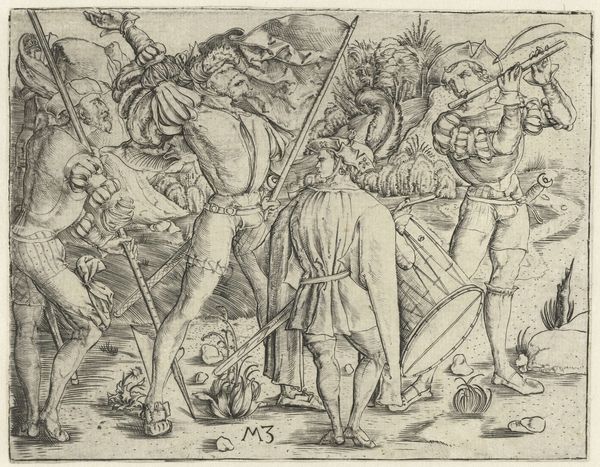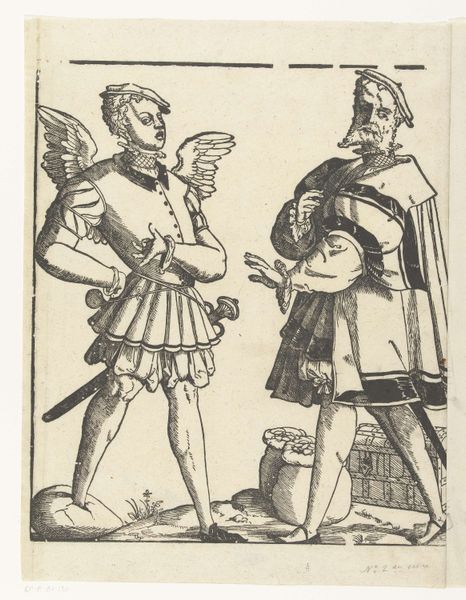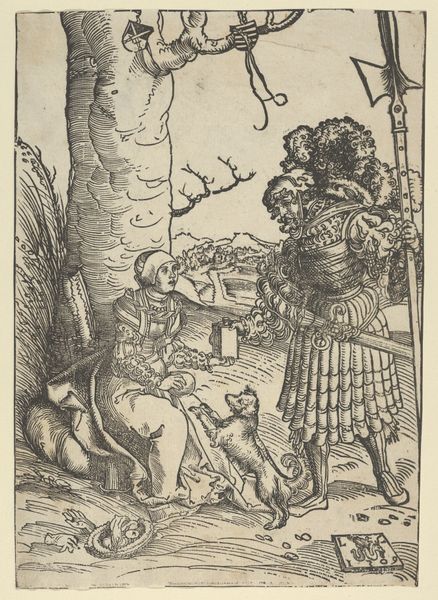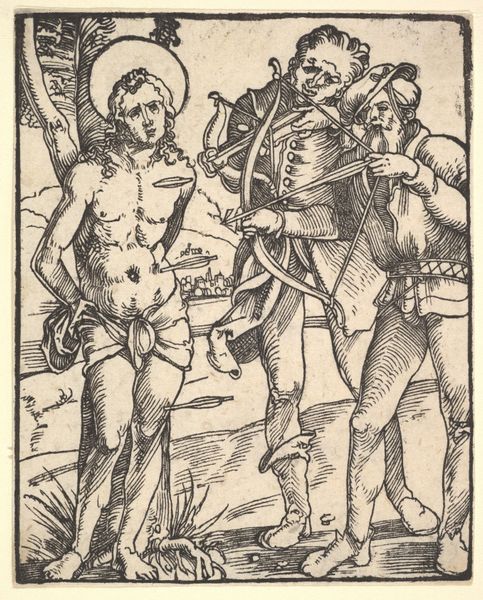
Heauton Timouroumenos, from The Comedies of Terence, 19th century reprint 1485 - 1528
0:00
0:00
drawing, print, woodcut
#
drawing
#
narrative-art
# print
#
pen illustration
#
pen sketch
#
figuration
#
woodcut
#
northern-renaissance
Dimensions: sheet: 3 1/2 x 5 5/8 in. (8.9 x 14.3 cm)
Copyright: Public Domain
Editor: This is a woodcut illustration by Albrecht Dürer, titled "Heauton Timouroumenos, from The Comedies of Terence, 19th century reprint," dating back to between 1485 and 1528. It depicts two figures in what appears to be a tense confrontation. What historical context should we consider when approaching this image? Curator: It's important to acknowledge the artwork's basis in the Roman playwright Terence's work and understand Dürer's role as a conduit between classical thought and the Northern Renaissance. Consider how the visual language echoes social hierarchies. Are these figures presented as equals, and how does their attire contribute to our understanding of their identities and relative status in the society that Dürer lived in? Editor: The figure on the left, pointing accusingly, is much more elaborately dressed. The other one looks...scared? Is it simply about wealth disparity? Curator: Not simply wealth, but power. Dürer's time was rife with shifts in power dynamics, religious reformation, peasant revolts… The body language, the clothing – these are all coded signs. Who has the authority to accuse, and who is subject to it? What systems of belief would these people have subscribed to that might explain that power imbalance? Editor: So, we’re looking at this scene not just as an isolated story, but as a reflection of broader power structures prevalent at the time. It's fascinating how the art becomes a document of its era. Curator: Precisely! And by considering it through lenses of class, gender, even burgeoning capitalist structures, we unpack not only the historical context, but also the continuing relevance of art's engagement with issues of dominance and marginalization. What are your final thoughts about that, connecting it to now? Editor: I see how understanding that historical context provides such a powerful lens for analyzing the visual narrative. Considering social identities adds layers of meaning. Thank you, this really helped open up the piece for me.
Comments
No comments
Be the first to comment and join the conversation on the ultimate creative platform.
